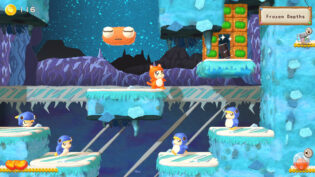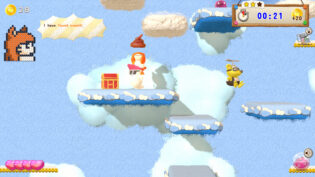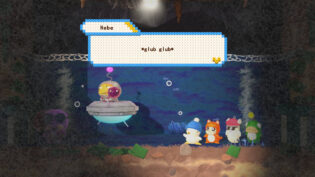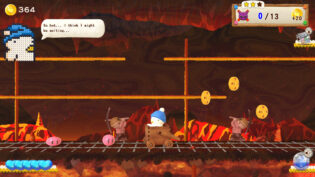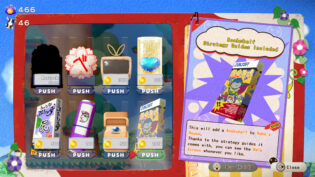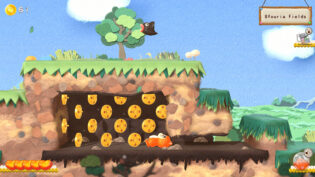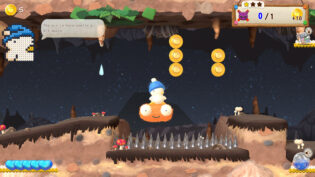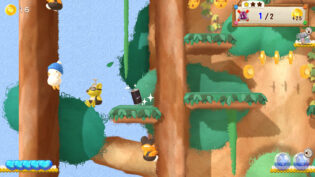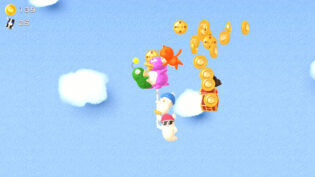Immediately after playing Hebereke for the first time, I’ve decided to see how the recently released sequel is going to tackle the seemingly same basic concept. The results were surprising, often pleasantly but sometimes not as much.
Just like the very first Hebereke game, that was known as Ufouria: The Saga in its English translated version that changed the plot and visual designs, this is an action adventure platformer with heavy emphasis on exploration with an interconnected world… Well, kinda interconnected. While the first game wasn’t exactly following the metroidvania-like design of the world, it was pretty close to its ideas in how you gradually unlock more and more abilities to explore more of the world. In Hebereke 2 instead the world is divided into named levels that all exist in the same spot in relation to each other. You will also always enter them from the same direction. But once you do, they play like a typical platformer level with a clear start and finish and you cannot go back. Some of the levels are even designed in such a way, as to make it impossible to backtrack even within the level itself.
Which is already quite different, but it’s not even the main strange gimmick (no Sunsoft pun intended) of the game. The levels aren’t just linear, they’re semi-random. Yep, you read that right – every time you enter any level, except for the Hebe’s home, the level gets constructed out of a collection of pre-designed level chunks and it’s very rare you get to play through the same level twice. You still get to unlock items and get to fight bosses and all of that, but now the progression is instead tied to coins and collectible cans that let you buy things in a vending machine in Hebe’s home, that in turn update the potential selection of elements each level will be built out of. On top of that, each time you enter a level one of several potential “missions” starts that gives you bonus reward if you manage to complete it before you get to the end point of the level, after which your only options are to go to the next level (if there is a connection) or to travel to Hebe’s home.
This decision is, genuinely, bizarre to me. On one hand, it’s neat to see a randomized twist to a cute adventurous platformer game. On another – this also means that you might not get collectibles from the level, because they simply do not exist in the version of the level that was just generated for you. In fact, if you do decide to go for all collectibles, like I did, I can’t say that it’s worth it because the game becomes very grindy and quite unfun as you get into the routine playthroughs of the same level over and over again until you get all collectibles and it takes a very long time.
In fact, this game in general sometimes feels as if the developers were taken out of a stasis sleep they were in for the past 30 years, as some of the decisions and lack of some basic quality of life elements expected from modern games are baffling. It’s never outright bad, but so many things are just bizarre. PC version itself, for example, has no options whatsoever and on top of that installs in the folder written in Japanese. Sure, modern operating systems tend to handle this fine, usually, but I can’t help but feel that this release will just stop working some day because of all these strange technical and design decisions.
On the other hand, the visual and audio design here is bizarre in the best possible way. All of the art, apparently, was created as physical miniatures and toys first and it all looks absolutely adorable in motion, reminding me of Kirby’s Epic Yarn cuteness. While the soundtrack is made up of mostly re-arrangements of the already fantastic tracks from the original 1991 game. The controls feel great and in my opinion much improved over the somewhat finnicky original. Although switching characters one by one feels less efficient than using the menu screen. It’s also a bit of a shame, that the special abilities as a concept are almost pointless in this game, instead of being potential “keys” for exploration – some of the collectibles require a couple of them, but otherwise you never want to use them.
Overall, I really liked Hebereke 2/Ufouria: The Saga 2 in all of its awkward and weird style. It has quite a few poor design choices, but is otherwise really charming and nice. And if you’re not one to go for collecting everything, you will enjoy the game even more.



